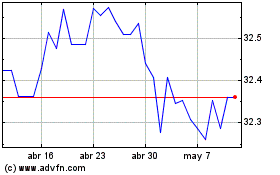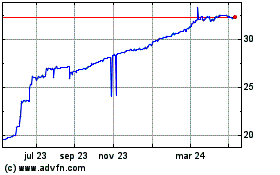German Business Confidence Remains Stable; Q3 GDP Growth Slows
24 Noviembre 2016 - 1:26AM
RTTF2
German business confidence remained stable in November,
suggesting that the economy gathered some momentum at the end of
the year, after slowing in the third quarter.
Latest official figures confirmed that third quarter growth
softened as initially estimated as domestic demand was not strong
enough to offset the decline in foreign demand.
The business climate index held steady at 110.4 in November. The
October reading was revised down from 110.5.
Firms were once again more satisfied with their current business
situation, but with regard to the coming months they are somewhat
less optimistic, the survey showed.
The current situation index rose to 115.6 from 115.1 a month
ago. Economists had expected the score to remain unchanged at
October's originally estimated value of 115.0.
The expectations index dropped to 105.5 from a revised 105.9 in
the previous month. The score was forecast to fall slightly to 106
from October's initial score of 106.1.
The survey added to the evidence that the economy has performed
fairly well so far in the fourth quarter, Jack Allen, a European
economist at Capital Economics, said. However, he expects growth to
slow next year, putting pressure on the European Central Bank to
loosen policy further.
The German economy seems to be unfazed by the election of Donald
Trump as US President, Ifo said.
According to the detailed data from Destatis, gross domestic
product expanded 0.2 percent sequentially, slower than the 0.4
percent growth seen in the second quarter. The quarter-on-quarter
growth came in line with the estimate published on November 15.
On a yearly basis, calendar-adjusted GDP growth eased marginally
to 1.7 percent from 1.8 percent. The price-adjusted GDP climbed 1.5
percent after rising 3.1 percent in the second quarter. Both
figures matched the preliminary estimates.
The expenditure-side breakdown of GDP showed that household
spending grew 0.4 percent, faster than the 0.2 percent expansion
seen a quarter ago. Meanwhile, growth in government expenditure
eased to 1 percent from 1.2 percent.
On the other hand, gross fixed capital formation stagnated.
While investment in construction rose 0.3 percent, capital
formation in machinery and equipment decreased 0.6 percent.
Foreign trade, too, had a downward effect on German economic
growth. Exports dropped 0.4 percent, while imports grew 0.2
percent.
US Dollar vs TRY (FX:USDTRY)
Gráfica de Divisa
De Mar 2024 a Abr 2024

US Dollar vs TRY (FX:USDTRY)
Gráfica de Divisa
De Abr 2023 a Abr 2024
